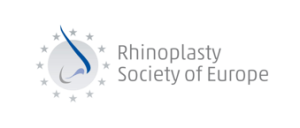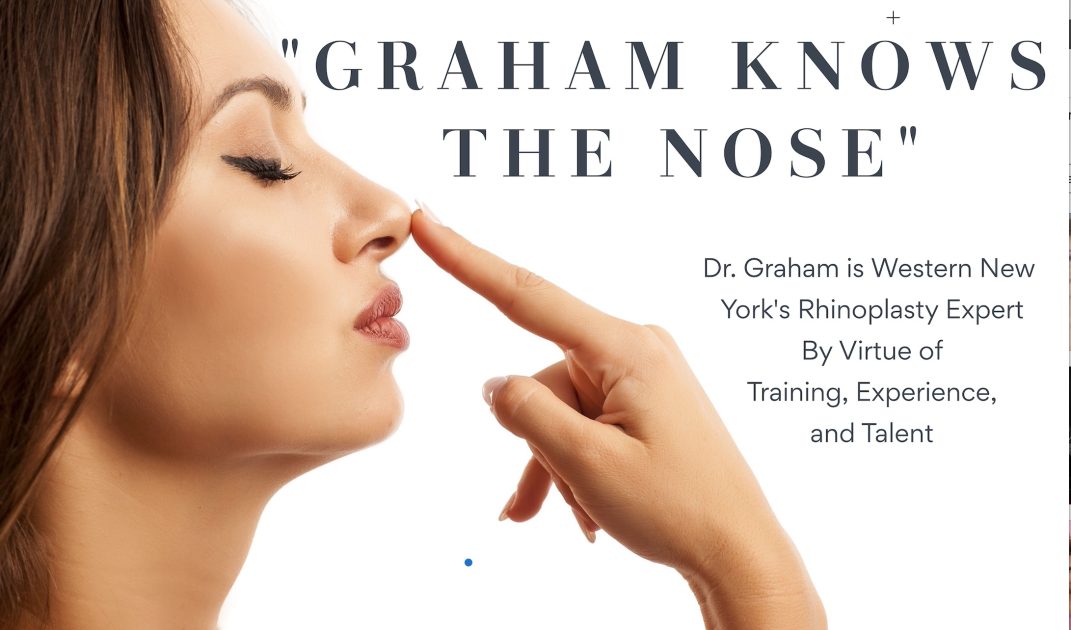Rhinoplasty
Rhinoplasty, also known as “nose reshaping” or a “nose job,” can improve the appearance and function of the nose.Rhinoplasty, or nose job, surgery is a passion and focus at Graham Plastic Surgery. Dr. Graham is a rhinoplasty specialist serving Rochester, Buffalo, and Syracuse. In addition to being Board Certified by the American Board of Plastic Surgery, Dr. Graham has traveled all over the world to train with masters of rhinoplasty. He has the most up to date training and technology for this operation, including ultrasonic rhinoplasty. Dr. Graham has expertisee in both primary and revision rhinoplasties.
Other advanced rhinoplasty training is listed below:
- 2012 Dallas Rhinoplasty Symposium and Course(Dallas, TX)
- 2015 Dallas Rhinoplasty Symposium and Course(Dallas, TX)
- Aesthetica 2014(Las Vegas, NV)
- Bergamo Advanced Mini-fellowship in Revision Rhino-septoplasty 2016(Bergamo, Italy)
- Rhinoplasty Society of Europe COVID Educational Series: 10 Challenges in Rhinoplasty 2020
- Structural, Preservation, and Precision Rhinoplasty with Ultrasonic Piezotome 2021
- Marina Medical Rhinoplasty Course 2021(Miami, FL)
- Seventh Bergamo Open Rhinoplasty Course 2022 (Bergamo, Italy)
- Stuttgart Advanced Rhinoplasty Course 2024 (Stuttgart, Germany)

Rhinoplasty Candidates
Rhinoplasty candidates include anyone who doesn’t like the appearance of his or her nose. Many patients have a dorsal hump or roundness of their nasal tip. Some feel that their nose hangs to low or dips when they smile. All of these deformities can be corrected via rhinoplasty. Rhinoplasty achieves the following:
Facial balance: Whether you feel your nose is too large, too wide, asymmetrical, or has an unattractive angle, nose surgery can improve the size, shape, and overall appearance of your nose. Rhinoplasty will help balance your facial features by creating a nose that is in better harmony with the rest of your face, which can increase your confidence and improve your overall quality of life.
Improved breathing: Rhinoplasty can correct and relieve airway obstructions within the nose, such as a deviated septum or enlarged turbinates, to allow for normal, easier breathing. This procedure can alleviate sensations of congestion and other breathing problems related to the nasal passageway to provide you with improved comfort during your everyday life.
Rhinoplasty Procedure
Dr. Graham performs an open rhinoplasty procedure. Open rhinoplasty surgery begins with an invisible incision on the undersurface of the nose. The nose soft tissue is then elevated as the underlying cartilage and bone is exposed. This cartilage and bone is then delicately reshaped to give a more aesthetic look to the nose. Through several specific techniques the nose can be made to look longer, shorter, wider, or narrower. Often times the most requested changes are to remove a dorsal hump, make the nose straighter, and make the tip smaller. In rhinoplasty surgery every millimeter counts, and it is the attention to detail that only an open rhinoplasty approach can provide.
Ultrasonic Rhinoplasty
Ultrasonic Rhinoplasty, or Piezosurgery, is a revolution in rhinoplasty. Popularized by a French surgeon, Dr. Olivier Gerbault, Piezosurgery is the most disruptive technology to happen to rhinoplasty in over 20 years.Ultrasonic rhinoplasty is a revolution for a rhinoplasty surgeon because of the accuracy and precision of the technology. Using ultrasound your bones can be gently sculpted and cut with more accuracy and with less bruising and swelling. It has been proven in peer reviewed journals that ultrasonic rhinoplasty shortens recovery. More surgical accuracy, less collateral damage, and shorter recovery is whey many surgeons across the world are turning to ultrasonic rhinoplasty.
Structural versus Preservation Rhinoplasty
- Structural Rhinoplasty refers to the method of performing rhinoplasty by deconstructing and then reconstructing the structures of the nose to achieve the desired rhinoplasty result. Specifically, this involves splitting the nose down the middle of the septum to isolate and then treat it’s bony and cartilaginous components. This technique is indicated with large humps or when the nose is crooked.
- Preservation Rhinoplasty, which is a newer technique, attempts to achieve the same rhinoplasty results by preserving the nose’s natural structures, thus yielding a more natural appearing result. There are also hybrid techniques that combine the two techniques. Not everyone is a candidate for preservation rhinoplasty, as it is dependant on the correct anatomy. However, for those with the appropriate anatomy and surgical goals, it can yield better results than the traditional structural techniques.
Will insurance pay for my rhinoplasty?
Insurance companies may cover a small portion of a rhinoplasty if it is performed to correct a structural problem that impairs breathing, such as a deviated septum. We do not accept insurance as a form of payment at this practice, but we perform septoplasty for free.
What are the risks associated with rhinoplasty?
Please refer to the following form published by the American Society of Plastic Surgeons (ASPS)
What is the recovery time following rhinoplasty surgery?
This is dependant on the type of work you perform. Many patients with office jobs only require a week after rhinoplasty. During that first week both an internal and external nasal splint will be in place. You will most likely also have some bruising around your eyes. After the first week you can return to work, but likely with some bruising, although makeup will cover the majority. However, patients who perform heavy labor may require 2-4 weeks to recover.You may drive when you are off narcotics and feel confident to control the car, even in an emergency. Most patients are able to drive within 1-2 weeks.
What is a liquid rhinoplasty?
A liquid rhinoplasty refers to performing nasal reshaping using fillers such as Restylane, Juvederm, or Radiesse. This can help shadow a dorsal hump or refine a tip. This may be a more economic option for some patients, although the results aren’t permanent.
How much does rhinoplasty surgery cost?
The average cost of rhinoplasty in the US is $9,000-15000. Dr. Graham’s pricing for rhinoplasty can be found here.



